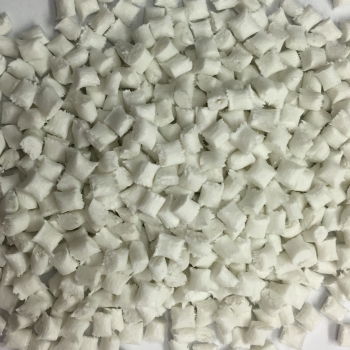What are the molding characteristics of Jiangmen engineering plastics
Engineering plastics are basically various synthetic resins. Many properties and behaviors of engineering plastics in the process of molding and processing are basically determined by the characteristics of synthetic resins. Synthetic resins are composed of many macromolecules with specific structures, which are also called polymers or polymers. When commenting on the principles of engineering plastics molding and processing, it is necessary to study the various characteristics of these synthetic resins.
No matter what kind of engineering plastic, the reason why it can be molded into a certain shape is that the polymer as its matrix has excellent molding processability, including extrudability, moldability, ductility and viscoelasticity. It is precisely because of these characteristics that engineering plastics are provided with the possibility to adapt to various molding processing skills. The forming and processing characteristics of engineering plastics are introduced as follows:
(I) extrudability
The ability of a polymer to obtain and adhere to its shape when it is deformed by extrusion is called extrudability. Engineering plastics are often extruded in the molding process, such as in the barrel of extruder and injection molding machine, and in the mold.
Engineering plastics can only obtain useful deformation by extrusion when they are in viscous flow state. The extrudability of engineering plastics mainly depends on the solution viscosity. The melt viscosity of most engineering plastics decreases with the increase of shear or shear rate. If the melt viscosity of engineering plastics is very low in the extrusion process, the ability to adhere to the shape is poor despite its excellent fluidity; On the contrary, if the melt viscosity is very high, it will form difficult flow and difficult to form. The extrudability of engineering plastics is also related to the structure of processing equipment. During the extrusion process, the flowing plastics of the engineering plastic melt are added with the increase of pressure. The pressure and the size of the equipment required for the molding process can be determined by measuring the flow rate.
(II) moldability

The shape of a polymer under the action of temperature and pressure is called moldability. The use of moldability enables the polymer to fill the mold cavity under the action of temperature and pressure, and then molded into various products. The most common methods of molding include injection, extrusion, molding, etc.
(III) ductility
Ductility is defined as the deformation of a polymer when it is rolled or stretched in one or both directions.
(IV) viscoelasticity
Engineering plastics usually change from solid to melt, and then from melt to solid to become products. In the forming process, the elasticity of the solid and the viscosity of the melt are reflected separately. However, due to the gradual movement of the long chain structure of polymer macromolecules, what they embody is not simply elasticity and viscosity, but the inductive function of the two, that is, viscoelasticity.
This article is from Jiangmen Engineering Plastics:http://www.wywantong.com/
-
04-13
PVC Engineering Plastics: how PVC plastic pipes are formed
The forming process of PVC plastic pipes should start from the raw materials of PVC plastic granules, which can be divided into soft PVC and hard PVC according to the added amount of stabilizer, plast
-
11-12
What is the filling property of Jiangmen engineering plastics
What is the filling property of Jiangmen engineering plasticsIn recent years, PC modified plastics have developed rapidly in China, and its industrial system is gradually established and improved. Th
-
10-08
Jiangmen Engineering Plastics: how to classify Jiangmen engineering plastics?
How to classify Jiangmen engineering plastics? 1. Classification by application characteristicsAccording to the different application characteristics of famous plastics, plastics are usually divided
-
08-30
Application scope of PBT engineering plastics
PBT engineering plastics are widely used in electronics, car industry, office machinery and other fields. In Japan and the developed countries in Europe, PBT engineering plastics are mainly used in t